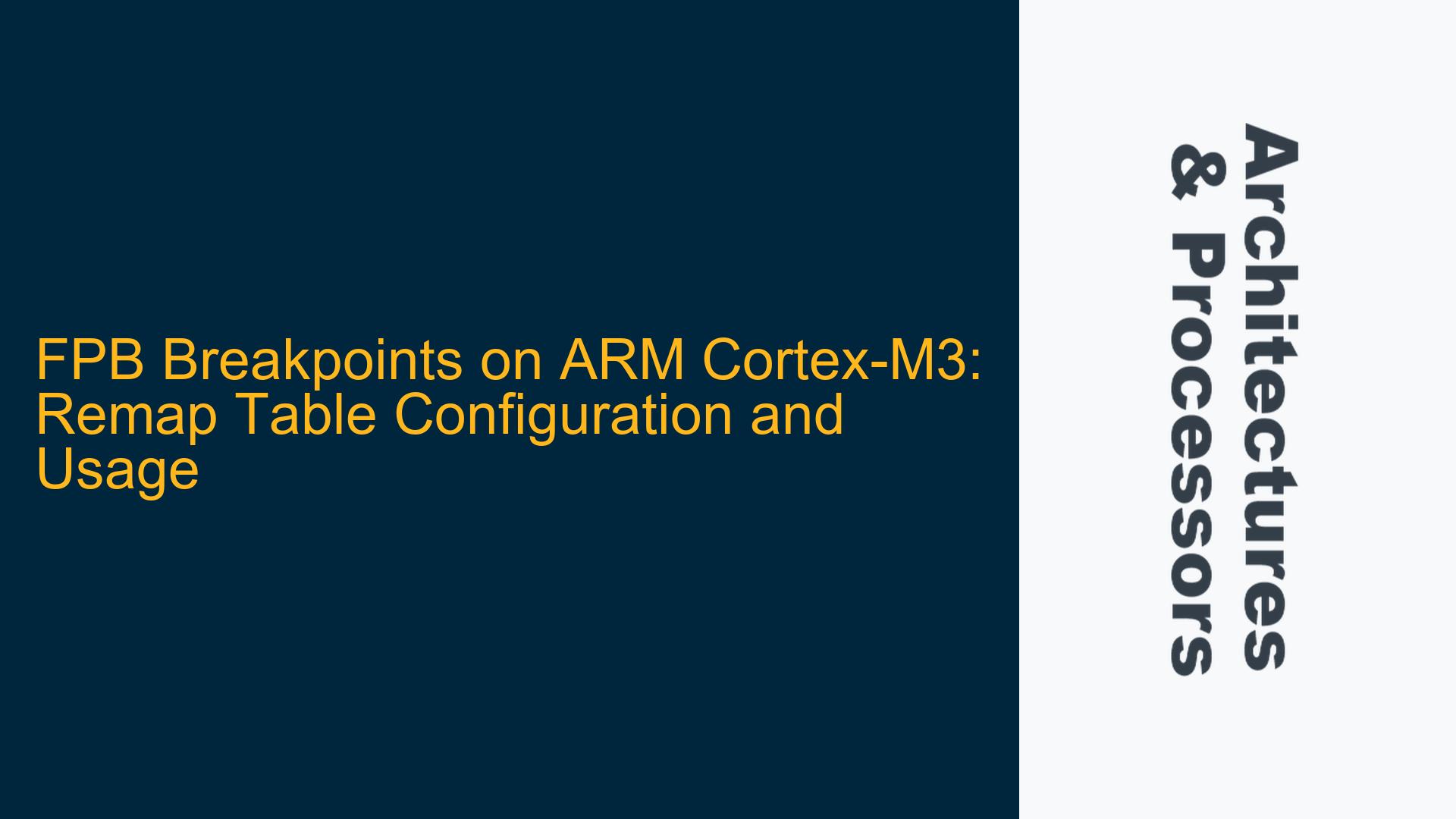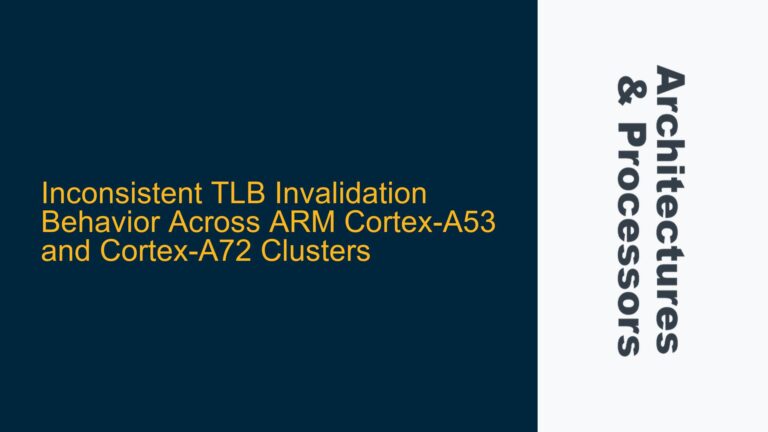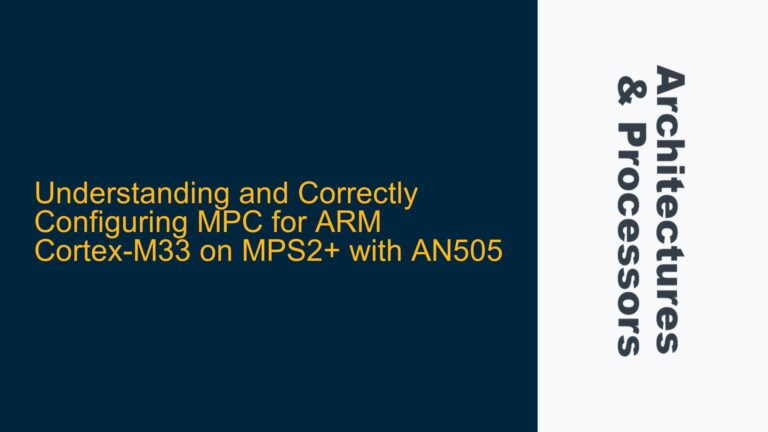Understanding FPB Breakpoints and Remap Table on ARM Cortex-M3
The Flash Patch and Breakpoint (FPB) unit is a critical component in ARM Cortex-M3 processors, enabling developers to set hardware breakpoints and patch code in flash memory. The FPB unit consists of comparators and a remap table, which work together to facilitate debugging and code modification. The primary function of the FPB is to intercept instruction fetches or data accesses at specific addresses and either redirect them to a different location in memory or trigger a breakpoint exception.
The FPB unit on the Cortex-M3 contains a limited number of comparators, typically six, which can be used for either breakpoints or flash patching. Each comparator is associated with a Program Comparator Register (FP_COMP) and a Remap Register (FP_REMAP). The FP_COMP registers are used to specify the address at which the breakpoint or patch should occur, while the FP_REMAP registers define the address to which the instruction or data should be redirected.
The remap table is a crucial part of the FPB unit, as it allows developers to redirect code execution or data access from one memory location to another. This is particularly useful when debugging or when a patch needs to be applied to a specific section of code without modifying the original flash memory. The remap table is indexed by the comparator number, and each entry in the table contains a remap address that corresponds to the address specified in the FP_COMP register.
Common Misconfigurations and Issues with FPB Remap Table
One of the most common issues when working with the FPB unit on the ARM Cortex-M3 is the incorrect configuration of the remap table. This can lead to breakpoints not being triggered or code patches not being applied as expected. The remap table must be correctly configured to ensure that the FPB unit functions as intended.
A frequent mistake is the incorrect setting of the FP_COMP registers. The FP_COMP registers must be set to the exact address where the breakpoint or patch should occur. If the address is not correctly specified, the FPB unit will not be able to match the instruction fetch or data access, and the breakpoint or patch will not be triggered. Additionally, the FP_COMP registers must be aligned to the instruction or data size. For example, if the breakpoint is set on a 32-bit instruction, the address in the FP_COMP register must be aligned to a 4-byte boundary.
Another common issue is the incorrect configuration of the FP_REMAP registers. The FP_REMAP registers must be set to the address where the instruction or data should be redirected. If the remap address is not correctly specified, the FPB unit will not be able to redirect the instruction fetch or data access, and the breakpoint or patch will not be applied. The remap address must also be aligned to the instruction or data size, similar to the FP_COMP registers.
The remap table itself must be placed at a specific address in memory. The address of the remap table is determined by the processor’s memory map and must be correctly specified in the FPB unit’s configuration registers. If the remap table is not placed at the correct address, the FPB unit will not be able to access it, and the breakpoints or patches will not function as expected.
Step-by-Step Configuration and Debugging of FPB Breakpoints
To correctly configure and debug FPB breakpoints on the ARM Cortex-M3, follow these detailed steps:
-
Identify the Address for Breakpoint or Patch: Determine the exact address in memory where the breakpoint or patch should occur. This address must be aligned to the instruction or data size. For example, if the breakpoint is set on a 32-bit instruction, the address must be aligned to a 4-byte boundary.
-
Set the FP_COMP Register: Write the address identified in the previous step to the appropriate FP_COMP register. The FP_COMP register corresponds to the comparator number that will be used for the breakpoint or patch. Ensure that the address is correctly aligned and matches the instruction or data size.
-
Determine the Remap Address: Identify the address in memory where the instruction or data should be redirected. This address must also be aligned to the instruction or data size. The remap address is where the FPB unit will redirect the instruction fetch or data access when the breakpoint or patch is triggered.
-
Set the FP_REMAP Register: Write the remap address to the appropriate FP_REMAP register. The FP_REMAP register corresponds to the comparator number that will be used for the breakpoint or patch. Ensure that the remap address is correctly aligned and matches the instruction or data size.
-
Place the Remap Table at the Correct Address: Ensure that the remap table is placed at the correct address in memory. The address of the remap table is determined by the processor’s memory map and must be correctly specified in the FPB unit’s configuration registers. If the remap table is not placed at the correct address, the FPB unit will not be able to access it, and the breakpoints or patches will not function as expected.
-
Enable the FPB Unit: Enable the FPB unit by setting the appropriate bits in the FPB control register. This will activate the comparators and allow the FPB unit to start monitoring instruction fetches and data accesses.
-
Verify the Configuration: Use a debugger to verify that the FPB unit is correctly configured and that the breakpoints or patches are functioning as expected. Check the FP_COMP and FP_REMAP registers to ensure that the addresses are correctly set. Use the debugger to step through the code and verify that the breakpoints are triggered and that the code is correctly redirected.
-
Debugging Common Issues: If the breakpoints or patches are not functioning as expected, check the following:
- Ensure that the FP_COMP and FP_REMAP registers are correctly set and aligned.
- Verify that the remap table is placed at the correct address in memory.
- Check the FPB control register to ensure that the FPB unit is enabled.
- Use the debugger to step through the code and verify that the breakpoints are triggered and that the code is correctly redirected.
By following these steps, you can correctly configure and debug FPB breakpoints on the ARM Cortex-M3. The FPB unit is a powerful tool for debugging and code patching, but it requires careful configuration to ensure that it functions as intended. With the correct setup, the FPB unit can greatly enhance the debugging process and enable developers to quickly identify and resolve issues in their code.
Advanced Considerations and Optimizations for FPB Usage
While the basic configuration of the FPB unit is straightforward, there are several advanced considerations and optimizations that can enhance its effectiveness. These include understanding the limitations of the FPB unit, optimizing the use of comparators, and leveraging the FPB unit for more complex debugging scenarios.
-
Limitations of the FPB Unit: The FPB unit on the ARM Cortex-M3 has a limited number of comparators, typically six. This means that only a limited number of breakpoints or patches can be set at any given time. To maximize the effectiveness of the FPB unit, it is important to prioritize the most critical breakpoints or patches and to use software breakpoints for less critical debugging tasks.
-
Optimizing Comparator Usage: Each comparator in the FPB unit can be used for either a breakpoint or a flash patch. To optimize the use of comparators, consider using them for the most frequently accessed code or data. For example, if a particular function is called frequently, setting a breakpoint on that function can provide valuable debugging information. Similarly, if a specific section of code needs to be patched frequently, using a comparator for that patch can reduce the overhead of repeatedly modifying the flash memory.
-
Complex Debugging Scenarios: The FPB unit can be used for more complex debugging scenarios, such as conditional breakpoints or data watchpoints. Conditional breakpoints can be implemented by combining the FPB unit with software logic to trigger a breakpoint only when certain conditions are met. Data watchpoints can be implemented by using the FPB unit to monitor specific data addresses and trigger a breakpoint when the data is accessed or modified.
-
Performance Considerations: The FPB unit can introduce some overhead, particularly when multiple comparators are used. To minimize the impact on performance, consider using the FPB unit only when necessary and disabling it when it is not needed. Additionally, consider using the FPB unit in conjunction with other debugging tools, such as the Data Watchpoint and Trace (DWT) unit, to provide a more comprehensive debugging solution.
-
Security Considerations: The FPB unit can be used to patch code in flash memory, which can introduce security risks if not properly managed. To mitigate these risks, consider using the FPB unit only in a secure debugging environment and disabling it in production code. Additionally, consider using the FPB unit in conjunction with other security features, such as the Memory Protection Unit (MPU), to ensure that only authorized code can be patched.
By considering these advanced considerations and optimizations, you can enhance the effectiveness of the FPB unit and leverage its full potential for debugging and code patching on the ARM Cortex-M3. The FPB unit is a powerful tool, but it requires careful management to ensure that it is used effectively and securely. With the right approach, the FPB unit can greatly enhance the debugging process and enable developers to quickly identify and resolve issues in their code.






